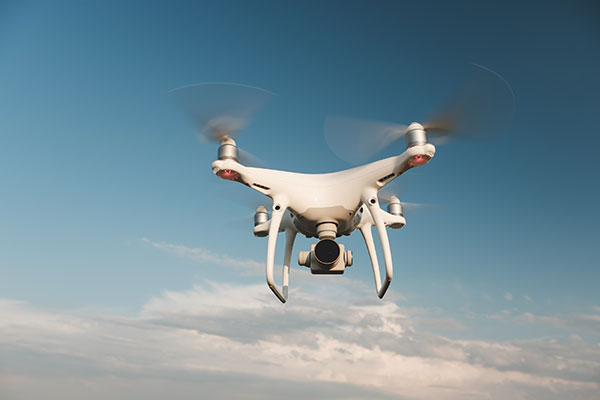한국미래기술교육연구원(kecft)은 25일 여의도 전경련회관에서 ‘UAM 민간 시장 확대를 위한 인프라/서비스 운영 및 기술’ 세미나에서 UAM 통신 및 자율주행 회랑 설계 방안에 대해 발표했다. UAM 본격 활성화가 되기 위해서는 국제 표준 UAAN 통신부터 상용화가 필요하다는 전문가의 의견이 제시됐다.
UAM 통신 LTE 보완 전용 솔루션 요구
ETRI, 드론 통신 네트워크 표준 UAAN 제정
차세대 모빌리티로 떠오른 UAM(도심항공모빌리티) 시장 선점을 위해 국가 차원의 개발이 활발한 가운데, UAM 본격 활성화가 되기 위해서는 국제 표준 UAAN 통신부터 상용화가 필요하다는 전문가의 의견이 제시됐다.
한국미래기술교육연구원(kecft)은 25일 여의도 전경련회관에서 ‘UAM 민간 시장 확대를 위한 인프라/서비스 운영 및 기술’ 세미나에서 UAM 통신 및 자율주행 회랑 설계 방안에 대해 발표했다.
한국전자통신연구원(ETRI) 황현구 연구원은 “현재 기체는 충분히 고도화 된 반면, 전 세계적으로 적합한 드론 통신 솔루션이 없다”며, “드론 전용 통신으로 유일한 상용화 가능 기술인 무인기 통신 네트워크(Unmanned aircraft area network, UAAN) 상용화 등 통신 분야에 적극 투자해야 한다”고 주장했다.
황 연구원에 따르면, 현재 UAM 관련 기술 개발 현황으로 드론 기체는 촬영, 농업 등 다양하게 사용되고 있으나, LTE 통신 외 적당한 통신 솔루션은 부재한 상황이다.
유인기는 서로 인식하고 충돌을 회피할 무선 통신 수단인 ADS-B가 존재하는 반면, 300~600m 저고도에서 비행하는 드론은 상호 인식과 충돌 회피용 통신 수단이 없어 헬기와 드론의 충돌 등 사고가 빈번하다. LTE는 고도가 높아질수록 통신 두절이 심해 보완이 필요하고, Wi-Fi도 도심에서는 간섭이 심하고 통신 거리가 짧다.
결국 UAM 제어를 위해 LTE 외의 전용 통신 시스템 구축이 가장 우선순위다. LTE는 여러가지 한계가 존재한다. 망 다운 시 위험, 유료로 이용해야 한다는 점, 높은 고도에서의 리피터 잡음 등의 문제를 동시에 안고 있어 보완이 필요하다.
또한 UAM은 최종적으로 조종사가 탑승하지 않고 자율 운항을 지향하며 원격 조정을 가능케 해야 하는데, 자율 비행에는 LTE까지의 고스펙의 사양이 필요 없다. LTE 기지국들이 이미 지상의 스마트폰 유저를 대상으로 서비스를 지원하는 문제도 존재한다.
■ 국내 연구진, 드론 통신 네트워크 표준 제정
ETRI는 지난 3월 드론 통신 네트워크 표준 UAAN을 제정했다. 해당 기술은 학술적 이름으로 에반(EVAN)으로 명명된다. 이는 드론 제조사마다 공통된 통신규격으로써 정보 교환이 가능케 한다.
영상 통신, 제어 통신, 공유 통신 3가지를 커버하며, 주로 드론 간 통신을 지원하는 공유 통신이 주목받고 있다. SCI 논문에 따르면 UAAN은 유일한 상용화 가능 기술임이 공식 인정됐다.
UAAN의 주요 특징으로는, 지상 기지국 인프라 없이 자율적으로 동작해 주파수 할당만 완료되면 무료 사용이 가능하다. 해당 주파수는 ADS-B와 동일하며, 약 5km 통신 거리를 커버한다. 또한 방송이 가능할 뿐만 아니라 충돌 회피를 위한 경로 협상을 위해 일대일 통신을 지원한다.
기지국 역할을 수행하는 작은 톤 채널이 통신 거리가 2배 이상 길어 데이터 채널이 충돌하지 않아 통신 안정화를 만족한다. 황 연구원은 “빠른 무인기여도 톤 채널로써 통신 효율이 좋고 대규모의 무인기가 투입돼도 안정적이며, 복잡도도 낮다”고 덧붙였다.
UAAN 통신을 이용해 우선 무인기는 물론 관련 장치까지 상호연결이 가능하다. 탐지 및 회피 서비스는 공유 통신을 이용해 주변에 어떤 드론이 있는지 인지하고, 위험을 감지 및 협상이 가능하다. 탐지를 위해 드론이 기본적 위치를 먼저 방송하고, 이후 경로점들을 방송해 드론 간 충돌 회피를 달성할 수 있다.
이외에 UAAN 통신을 이용한 서비스 기능으로는 △지상으로 데이터를 송신해 불법 드론을 확인하는 수단으로써 활용 △자율 운항 시 3D맵에 나오지 않는 실시간 이동 장애물에 부착해 장애물 회피 △드론 및 타 드론 정보 토대로 실시간 위치 파악 및 감시·추적 △동적 지오펜싱 설정 등이 있다.
황 연구원은 “내년 국토부와 2년간 모델을 만들고 이후 무인기 테스트를 진행할 것”이라며, “전 세계적으로 드론 시장 선점에 나서는 가운데 통신을 상용화하는 기업이 키를 가지게 될 것”이라고 덧붙였다.
.jpg)
